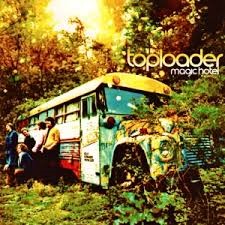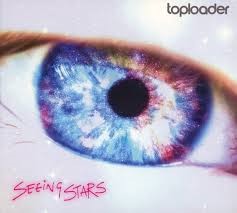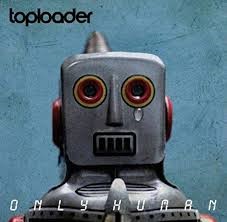Toploader music; An Album Review

Toploader music; An Album Review
Toploader music blends catchy melodies, soulful energy, and radio-friendly rock that defined a generation of British pop rock fans. Known best for their massive hit “Dancing in the Moonlight,” the band’s catalogue goes far beyond that one track. Across five studio albums, Toploader evolved from youthful optimism to seasoned maturity, all while staying true to their upbeat musical roots.
This article explores the full journey of Toploader music, examining each studio album (excluding The Lost Songs compilation) and highlighting the band's highs, lows, and creative rebirths. Whether you're revisiting the classics or discovering their deeper cuts, this review offers a complete guide to understanding Toploader’s musical legacy.
Most asked Questions;
Who is Toploader?
Toploader is a British rock band formed in 1997 in Eastbourne, East Sussex, England. They became popular in the early 2000s for their upbeat, keyboard-driven sound that blended pop rock with soul and classic influences. Known for delivering feel-good music with broad mainstream appeal, Toploader music connects with listeners through its simplicity and optimism.
What is Toploader’s most famous song?
Toploader’s biggest hit is their cover of “Dancing in the Moonlight.” Released in 2000, it became a UK chart success and remains a popular radio staple. Though not originally written by the band, the track defined Toploader music for many fans and introduced their signature style to a wide audience.
Is "Dancing in the Moonlight" an original Toploader song?
No, Toploader’s “Dancing in the Moonlight” is a cover of King Harvest’s 1972 hit. Their version was released in 2000 and appeared on their debut album. Although it wasn’t an original composition, it became one of the most enduring examples of Toploader music.
How many albums has Toploader released?
Toploader have released five studio albums: Onka’s Big Moka (1999), Magic Hotel (2002), Only Human (2011), The Lost Songs (2012 – not covered here), and Seeing Stars (2017). Each album represents a shift in Toploader music, showcasing their stylistic changes over time.
Are Toploader still together/touring?
Yes, Toploader are still active. While they do not release new albums frequently, they continue to perform live, particularly at UK festivals and nostalgic pop-rock events. Their performances still feature crowd favourites like “Dancing in the Moonlight,” showing the ongoing appeal of Toploader music.
Who are the members of Toploader?
Toploader’s members include Joe Washbourn (vocals and keyboards), Dan Hipgrave (lead guitar), Matt Knight (bass), Rob Green (drums), and Julian Deane (second guitar). They form the lineup most commonly associated with the classic era of Toploader music.
What genre is Toploader?
Toploader music fits into British alternative rock and pop rock. Their songs often include soul and classic rock influences, with an emphasis on keyboards and upbeat melodies. The band’s style appeals to fans of accessible and energetic rock music.
When was Toploader’s last album released?
Toploader’s last studio album was Seeing Stars, released on 20 February 2017. It marked the latest evolution of Toploader music and reflected their continued interest in melodic, uplifting rock.
1. Onka's Big Moka (1999)

Toploader music made a major impact with the release of Onka’s Big Moka in November 1999. This debut album brought them huge commercial success, reaching number four on the UK Albums Chart. Fueled by their hit cover of “Dancing in the Moonlight,” the album introduced audiences to their feel-good, keyboard-led style.
Although reviews were mixed, the public embraced it. Some critics found the sound overly familiar, describing it as unoriginal or safe. Nevertheless, many fans connected with its upbeat mood and optimistic lyrics. Joe Washbourn described the record as “beautifully naive,” reflecting the band’s excitement at the time.
The album’s success shaped the public image of Toploader music for years. Songs like “Achilles Heel” and “Only for a While” added emotional weight. Still, “Dancing in the Moonlight” overshadowed everything else. That single became an anthem of the early 2000s, driving album sales and airplay.
From a musical standpoint, the album mixes pop rock with elements of soul and British alternative rock. Strong keyboard hooks and catchy choruses define the Toploader music formula. Despite harsh reviews from some quarters, Onka’s Big Moka established the band as a chart force.
Importantly, this album remains the benchmark for all Toploader music that followed. It set expectations high. Whether listeners loved or dismissed the debut, it became impossible to ignore. With its commercial performance and long-term fan recognition, Onka’s Big Moka continues to be Toploader’s most defining moment.
It laid the foundation for the band’s identity and launched them into the mainstream spotlight. As a result, Onka’s Big Moka still stands tall in the legacy of Toploader music.
2. Magic Hotel (2002)

Toploader music reached its commercial peak with the release of Magic Hotel in August 2002. The album debuted at number three on the UK Albums Chart, showing strong fan anticipation. However, critical response was much less enthusiastic. Many reviewers called it forgettable and accused the band of losing originality.
The band admitted they felt burned out while making the record. In interviews, Joe Washbourn explained they rushed into production too soon after their debut. He said they wanted a more serious tone, but now regrets not taking time off. That creative fatigue comes through in the album’s uneven style.
Although Magic Hotel includes energetic tracks and catchy moments, critics highlighted a lack of cohesion. Songs tried to build on earlier success but didn’t always land. Reviews described it as “nondescript” and “mediocre.” Some went as far as calling the sound uninspired.
Still, Magic Hotel reflects a key turning point in Toploader music. It captures a band under pressure to repeat earlier success. The album experiments with pop rock and soul rock, continuing their formula but pushing toward mainstream trends.
Toploader music here feels more polished but less adventurous. While it didn’t enjoy the long-term success of their debut, it offers a snapshot of the band at a creative crossroads. Despite the negativity, Magic Hotel showed that Toploader could still command attention.
The album’s commercial performance proved the band still had a loyal audience. Even though critical opinion dropped, Toploader music remained in the spotlight. As a follow-up to Onka’s Big Moka, this album represents both the peak and the challenge of sustaining success in a competitive music scene.
3. Seeing Stars (2006)

Toploader music continued evolving with Seeing Stars, released in February 2017. This was their most recent studio album and marked another chapter in their post-hiatus career. While earlier releases leaned heavily on major label polish, Seeing Stars felt more independent and personal.
The album showcases a band comfortable with its identity. They no longer chase chart hits. Instead, the focus shifts toward songwriting and connection. The production is cleaner, and the arrangements allow for more nuance than before.
Toploader music on Seeing Stars retains their trademark optimism but adds emotional weight. Songs explore themes of resilience and self-reflection. That gives the album a maturity missing in their earlier work.
Although mainstream media largely ignored the release, fan reception was positive. Listeners praised the songwriting and saw it as a return to form. It didn’t generate big singles, but the album succeeded in delivering a cohesive listening experience.
The band continued to rely on rich keyboard work, catchy melodies, and tight rhythms. However, they used these elements with restraint. That shift made the album stand out in their catalogue.
Critically, Seeing Stars didn’t draw much attention. Yet, that absence of hype may have worked in its favor. Fans enjoyed discovering the music on their own terms, unfiltered by industry noise.
Toploader music on this album reflects the band’s long journey. It balances their early energy with seasoned confidence. The result is a collection of songs that feel both familiar and fresh.
In the broader context of their discography, Seeing Stars quietly reinforces Toploader’s relevance. It shows that even without big label backing, the band can still craft meaningful, well-produced music that stays true to their roots.
4. Only Human (2009)

After nearly a decade away from the studio, Toploader music returned with Only Human in May 2011. The album marked a fresh start, free from the intense commercial pressures of their early years. This time, the band took more control and leaned into maturity.
According to interviews, the band felt able to explore and evolve. Joe Washbourn said growing older influenced their songwriting. That sense of reflection runs throughout the record. Listeners notice a shift from bright pop rock toward a more grounded sound.
Only Human shows Toploader music with added depth. There are fewer instant anthems, but the songs offer more emotional complexity. Tracks like “Never Stop Wondering” highlight the band’s growth and willingness to try new directions. They embraced a more personal and introspective tone.
Critical reception was modest but more balanced. Reviewers noted the record’s polished production and thoughtful lyrics. While it lacked the punch of earlier hits, fans appreciated the band’s return and renewed focus.
Commercially, Only Human didn’t reach chart heights. However, that wasn’t the goal. Instead, Toploader aimed to reintroduce themselves and connect with longtime fans. The album accomplished that by staying true to their core identity while experimenting just enough to stay relevant.
Toploader music here feels more intimate and less manufactured. The songs invite repeat listening rather than instant singalongs. That marks a clear evolution in their discography.
Ultimately, Only Human stands as a solid comeback. It confirmed the band’s place in British pop rock and proved they could move beyond their early fame. The album may not have topped the charts, but it restored confidence in the quality of Toploader music.
Toploader music offers more than just nostalgia. From their massive debut to thoughtful later releases, each album reflects a different stage of their evolution. While critics didn’t always offer praise, the band consistently connected with fans through uplifting sounds and heartfelt lyrics.
Even after decades in the industry, Toploader music continues to resonate—whether it’s blaring at a summer festival or playing quietly through headphones. Their journey proves that good songwriting, emotional honesty, and a feel-good groove never go out of style. For anyone looking to rediscover or deepen their appreciation of British pop rock, the Toploader discography remains well worth the listen.
Recent Posts
Queen studio albums: A Review
Phil Collins Albums Ranked & Reviewed – Complete Guide to Every Studio Album
The best of Massive Attack
Let’s Make Magic
Book Your Event DJ Now




